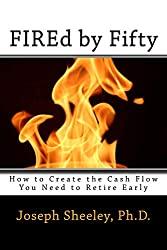
Tropical beach, relaxing, summer scenery photo, free public domain CC0 image.
" data-image-meta="{"aperture":"0","credit":"rawpixel.com","camera":"","caption":"Tropical beach, relaxing, summer scenery photo, free public domain CC0 image.","created_timestamp":"0","copyright":"","focal_length":"0","iso":"0","shutter_speed":"0","title":"Tropical beach, relaxing, summer scenery photo, free public domain CC0 image.","orientation":"1"}" data-medium-file="https://smallivy.files.wordpress.com/2023/05/cznmcy1wcml2yxrll3jhd3bpegvsx2ltywdlcy93zwjzaxrlx2nvbnrlbnqvbhivchg5ota1mzmtaw1hz2uta3d2egexehouanbn.jpg?w=300" data-permalink="https://smallivy.com/2023/05/20/how-to-invest-for-income/tropical-beach-relaxing-summer-scenery-photo-free-public-domain-cc0-image/" alt="" class="wp-image-23322" data-large-file="https://smallivy.files.wordpress.com/2023/05/cznmcy1wcml2yxrll3jhd3bpegvsx2ltywdlcy93zwjzaxrlx2nvbnrlbnqvbhivchg5ota1mzmtaw1hz2uta3d2egexehouanbn.jpg?w=723" />Photo by Stijn Dijkstra on Pexels.comA lot of your life you’ll be investing for growth. The amount of money you’ll need in retirement to live a comfortable lifestyle is enormous. At this point, I’d say you’d want between $3 and $6 million when you reach retirement age if you are just starting adult working life now. These are huge sums, but with growth investing and time, they really aren’t that difficult to achieve. Just put about 10% of your income into a set of growth ETFs from the time you start working and you’ll most likely get there.
But what about when you do get to retirement and actually need to live on your portfolio? How do you invest then? Income investing is the answer for many people. We’ll discuss how this is done and the types of investments to target in this article.
Hey – if you like The Small Investor, help keep it going. Buy a copy of the SmallIvy Book of Investing: Book1: Investing to Grow Wealthy or just click on one of the product links below, then browse and buy something you need from Amazon’s huge collection. As an Amazon Affiliate, The Small Investor receives a small commission each time that you buy something through one of our links It costs you nothing extra, but keeps us providing your with great, free articles and pays our bills. Thanks!
If you do use mutual funds and are looking for ways to choose types of funds, check out my new mini-book, Sample Mutual Fund Portfolios. It goes through fund allocations for different types of accounts, from 401ks and IRAs to college accounts, saving up for things and accounts for spending during your retirement years or other times where you’re using money from a portfolio to fund your lifestyle.

What investments are good sources of income?
When looking to generate income, we’re generally looking for things that provide direct cash. Yes, it is totally possible to generate income by buying and selling at a higher price, but we’re really wanting assets that put a check in our bank account each month. (We’ll discuss why in the next section.) Note that there are times (low interest rate times) when it is not possible to generate enough income from income assets, at which point utilizing capital gains by selling appreciated assets is about the only option. That was true for about the last 20 years, but now that interest rates have risen, more options have become available.
Assets for generating income include:
*Dividend stocks
*Bonds
*Rental real-estate
*Selling options
*Limited partnerships – TAX DANGER HERE)
Dividend stocks are stocks that have reached the state of corporate life where they are generating a lot more cash than they need for operations or growth and therefore are paying a sizable dividend. Right now a stock with a dividend of 3% or larger would fall into this category. Dividend yields will rise or fall in the opposite direction as interest rates since investors will move in or out of dividend stocks depending on what interest rates they can get from other investments. FOr example, dividend stock prices will fall when interest rates are rising since, by paying less, new investors raise their effective yield. One attractive thing about dividend stocks is that many will raise their dividend with time. You might make 3% yields when you first invest, but after 10 years you might be making 8% on your original investment. The stock price will probably also have risen by that timem so the stock may still be paying 3% on its value but be paying out 2 and two-thirds as much cash.
Bonds are loans made to companies. They pay a fixed interest rate so, like stocks, they will move up or down in price in the opposite direction to inetrest rates. Bonds mature at some point, where the company pays the original loan back, so whoever holds the bond at the time will generally get $1000 per bond. Because there is little or no capital appreciation with bonds, and the interest amount paid by a bond does not change, bonds in general do not have the total returns dividend stocks do. They do generally pay higher interest rates than dividend stocks provide in yield, however, so for income they are a great choice.

Check out my latest book on how to supercharge your finances, FIREd by Fifty: How to Create the Cash Flow You Need to Retire Early.
Rental real-estate is another choice for income since you can collect money from monthly rents. These come with expenses with unpredictable timing, however, so they don’t provide income as regularly as do bonds or dividend stocks. Total returns are on the same order as stocks, however, because a large amount of leverage is usually involved since many properties are bought on loans. In many cases, rents on properties bought with loans only cover the loan payments plus taxes and repairs, so income isn’t really made until the property is sold or the loan is paid off. There is also a big hassle factor if you’re renting places yourself. For this reason, REITs, which have a management company buy many properties (creating more predictable income) and take care of the operations, is a better choice for many income investors. This also provides access to a lot of properties like skyscrapers in big cities, large apartment compexes, and shopping malls that a small investor would never be able to buy. Some even invest in cell towers and storage units.
Another possibility for generating income is to sell covered calls on stocks you own and collateralized puts using cash you have. Here you’re giving a person the rights to buy your shares (calls) or obligating yourself to buy their shares (puts) at a certain price before a certain date. In exchange, you get cash called a premium. You get to keep the cash no matter what and they often decide not to complete the trade. Theoretically this could generate incomes in the 25% – 40% range per year, but in actuality returns in the 8-10% range are more common. Costs for doing this strategy, including taxes, also reduce returns significantly. One method is called a buy-write strategy, where you buy stocks and then immediately write calls on them. There are managed funds that will employ this strategy for you called “buy-write funds.”
Limited partnerships are a final possibility for income generation. These are usually things like natural gas or oil pipelines, big deposits of ores being mined, or similar assets where shares in the asset are sold off. Each person becomes a partner in the operations and receives a portion of the income generated through operation of the asset. These can pay substantial amounts of cash out monthly or quarterly. The biggest issue is that, as a partner, you’ll be claiming any income on your tax returns. The actual taxes aren’t bad since the partnerships generally do a good job of taking actions that reduce taxes, but if a partnership operates in multiple states like a pipeline, you would need to file income tax returns in every one of those states! For this reason, it is best to hold these only in tax-protected accounts like IRAs. Even then, check with an accountant to figure out what you’re getting into before you buy into a limited partnership.
For most of these income generation assets, you’ll be buying funds that invest in them rather than the assets themselves. With bonds in particular I’ve recently found it difficult to even find the information needed to select individual corporate bonds. Finding and buying individual dividend stocks is easier, but even here using a fund that will spread your investments out over several stocks instead of only buying a few is often preferable. The yield or interest payments made from the fund, plus any capital gain distributions, is therefore on what you’ll focus. Many pay out capital gains distributions at the end of the year, where they’ll pay out interest payments and dividends monthly or quarterly. The capital gain distribution is like a bonus you receive at the end of the year and can be less predictable than the regular monthly or quarterly dividend and interest distributions.

Want all the details on using Investing to grow financially Independent? Try The SmallIvy Book of Investing.
The income investing mindset
Income investing requires a different mindset from growth investing. Rather than focusing on total returns, the focus is on the income generated. The value of assets in the portfolio will move up and down with changes in interest rates, but all that you care about is how much income is generated and growth in the amount of income generated.
For example, I’ve held shares of Duff & Phelps Income Fund (DNP) since about 1990. I’ve seen its price as low as about $7 and as high as $13 to $14. When interest rates go down and people are looking for places that generate higher income than banks, money floods in and drives the share price up. When interest rates rise and banks start paying more, money flows out and share price drops. This affects my total return during any given year, but the income I receive has stayed relatively constant. If I want to buy more and the share price is down because interest rates are high, I pick some up and increase the amount of income I receive. If I want to raise some cash for something and interest rates are low such that the share price of DNP are high, I may sell some. The point is I don’t need to sell when prices are low because I’m still getting the income I need from the distributions, so it really doesn’t matter. I can just wait for prices to recover because interest rates have fallen to sell if I wish.
Over long periods of time, you’ll be giving up total return versus what you could get by investing in growth stocks by investing in income assets. But the point is to generate income you need now and have that income stream be more reliable than it would be from capital gains since you never know when stocks will take a dive and force you to sell off assets at low prices when you need the income. With income assets, provided things don’t get so bad that dividends get cut and bonds default, you can just pay for things using the income and ignore share and asset prices. Think of the loss in returns as insurance paid to ensure you have the cash needed for expenses.
You can also pair an income portion of your portfolio with a growth portion so that the growth keeps up with inflation while the income provides money needed now. With time, you can use the growth portion to buy more income assets to increase your income with inflation. Dividends will also increase with inflation (bond payouts won’t).

Setting up an income portfolio
In setting up an income portfolio, the goals are:
- Generation of sufficient income
- Generation of income at appropriate times
- Diversification of asset types to reduce sector risk
Purely as an example (what you should do in your own situation may vary), let’s say that you need income to pay for your child’s college. You figure out that they’ll need $30,000 per year. You’ll generate $5,000 per year from salary, and $10,000 per year by selling assets you have right now. You want to generate the final $15,000 per year from income investing. Because you need the money over the next four to five years, not in twenty years, you’re not wanting to rely on capital appreciation to generate income. You realize that you might do better investing and selling appreciated stocks, but you can’t be sure. You therefore choose to do income investing even though more often than not you’ll make a lower total return.
Let’s say that you have $250,000 for this purpose. You need to generate $10,000 per year, and 15,000/250,000 = 6%. This is a perfectly doable amount to generate through income investing right now.
For asset diversification, you choose to generate 40% through bonds, 30% through real-estate with REITs, and 30% with dividend stocks. You expect returns from dividend stocks to possibly be lower than bonds or REITs, so you overweight these assets. Still, they are a component that provides diversification, plus dividend yields may grow over the five years, so they should be included in the mix. If there is inflation during the period, this is especially important.
The first step would be to pick out your bond fund using 0.40 x $250,000 = $100,000. Let’s say there is a government bond fund paying 4% and a corporate fund paying 8%. You buy $50,000 of each, again to reduce your risk through diversification. The higher yield fund has more risk, but it also provides a higher rate-of-return. You hope that you don’t have any issues with the higher yield fund, but you have the other fund to reduce the damage caused if you do. You predict you’ll receive $6,000 per year between these two funds.
Next, looking at REITs, let’s say you find one with a 6% yearly payout that invests in apartments and another with a 9% payout that invests in office buildings. Again, you invest in both because you want to diversify. Let’s also say that, as a bonus, one of the two REITs has paid a capital gain distribution of about 2% during December during the last several years. You can’t count on this money, but it might be that you’ll receive a little extra pay and perhaps be able to reduce the amount you’ll need to pay from your salary. You’re investing $75,000 in REITs, so you get $2250 from one REIT and $3375 from the other for a total of $5625 from your REITs. This does not include the bonus from capital gains distributions, which might provide another $1500 per year.
The remaining money goes into dividend stocks. Let’s say that you find a couple of income funds paying 5% average, plus the possibility of another capital gains distribution each December. Income from these without the capial gain is $3750. Totalling things up we have:
Bonds ($6000) + REITs ($5625) + Stocks ($3750) = $15,375
This is just over the $15,000 you need, so you are likely going to be able to generate the income required. Of course, we have not included taxes here, which would depend on your income tax rate, but we have also not factored in the possible capital gains distributions which would help offset those taxes. If these investments were in a tax-free account like an educational IRA, the interest and divdend would also be tax-free when paying for educational expenses. Working with a tax professional is always a good idea to avoid any surprises.
As far as timing of income goes, many funds pay out an equal amount each month with possible capital gain distrbutions at the end of the year. This will work in most cases unless you have a big bill due right at the start, in which case you would need to start income investing early and build up the cash you need. If you invest in the stocks and bonds directly, the stocks will normally pay out once per quarter and the bonds twice per year. If this is the case, find those that pay out in time for whenever the expenses you have come due. Again, capital gains distributions are often in December, so you’ll probably have some extra cash in January.
During the time when you’re paying expenses, all you’ll care about is that the funds keep paying out the required amounts. They may move up and down with interest rates, but as long as you’re receiving the cash needed for expenses, why would you care? Once college is done and you no longer need the income, you could invest whatever is left in growth assets (which would likely be lower in price if interest rates had climbed and caused your income fund prices to drop, giving you a good buy price) and then start regaining any ground you’d lost. You could also, if you wish, just hold onto the income assets and keep earning the income payouts while share prices were down, selling out when they recover. In the case of the bonds, no matter how much they dropped as interest rates rose, as long as the companies survive that issued them, your funds will receive the full $1000 per bond when they mature. Holding on is often the solution to a dip in price.
Have a burning investing question you’d like answered? Please send to [email protected] or leave in a comment.
Follow on Twitter to get news about new articles. @SmalllIvy
Disclaimer: This blog is not meant to give financial planning or tax advice. It gives general information on investment strategy, picking stocks, and generally managing money to build wealth. It is not a solicitation to buy or sell stocks or any security. Financial planning advice should be sought from a certified financial planner, which the author is not. Tax advice should be sought from a CPA. All investments involve risk and the reader as urged to consider risks carefully and seek the advice of experts if needed before investing.
